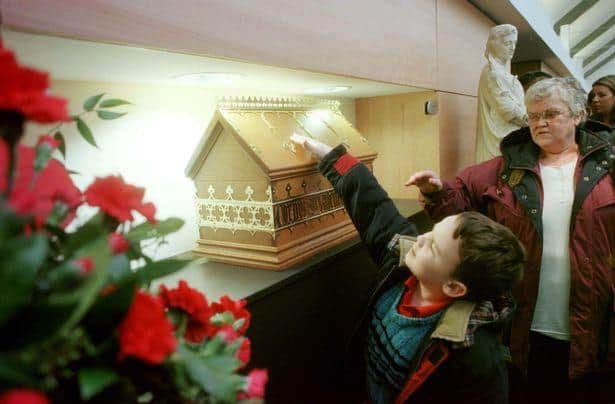St Valentine in Glasgow: what are the city’s mysterious links to the patron saint of lovers?
and live on Freeview channel 276
When you think of the language of love, Glasgow might not be the first place that springs to mind.
The Glesga kiss could not be misconstrued as a romantic gesture - a headbutt certainly doesn’t scream ‘I love You’.
Advertisement
Hide AdAdvertisement
Hide AdBut the Scottish city has fascinating links to the 14 February celebration and the saint it commemorates.


So who was Saint Valentine - and what are his connections to Glasgow?
How is Glasgow linked to Saint Valentine?
The mysterious link can be traced to a church which sits within the Gorbals neighbourhood of Glasgow, perched on the south-end of the River Clyde.
The Church of Blessed John Duns Scotus plays a special role in commemorating the saint as it is home to a small wooden box, which contains one of the saint’s relics - his forearm bone.
Advertisement
Hide AdAdvertisement
Hide AdThe outside of the box features gold plated letters ,which read “Corpus Valentini Martyris,” or “the Body of Saint Valentine.”
Every year, the box containing the relics is dressed in flowers to celebrate the life and sacrifice of the patron saint of lovers.
The area inside the church, next to where the sacred relics of Saint Valentine are kept, has reportedly become a popular location for proposals on 14 February.
His other remains are also in Europe - including his skull Rome, some bones and blood kept in Dublin and other remains in Birmingham.
How did a part of Saint Valentine end up in Glasgow?
Advertisement
Hide AdAdvertisement
Hide AdSaint Valentine is not known to have visited Glasgow, as he was a priest or bishop in Italy in the third century.
However, In 1868 a French family donated some relics of Saint Valentine to the Franciscan Catholic church.
French monks then brought the relics to Glasgow to donate them to the Church of Saint Francis - which is also in the Gorbals - as they had been impressed by the faith of Glaswegians.
The bones remained at Saint Francis’ church from 1868 until they were moved to the former St Luke's church on Ballater Street in 1993.
Advertisement
Hide AdAdvertisement
Hide AdThe church has now been renamed Blessed John Duns Scotus church.
Why was Saint Valentine killed?
Valentine was a priest or bishop in Rome, who lived during the third century after Christ.
He was allegedly jailed by Roman emperor Claudius II for his deceit and unwillingness to obey the emperor's orders to stop performing Christian marriages.
He was also said to be guilty of helping persecuted Christians.
Advertisement
Hide AdAdvertisement
Hide AdClaudius had ruled against Christian teaching as he did not want people to worship anyone other than him.
According to legend, Saint Valentine wrote letters to Claudius’ daughter, and miraculously rid her of blindness.
He also befriended Claudius, but when he tried to convert the emperor to Christianity, he was condemned to death.
Valentine wrote his final letter to the daughter of Claudius before his execution, signing it “from your valentine”.
Advertisement
Hide AdAdvertisement
Hide AdHe was beaten with clubs and stones, then beheaded outside the Flaminian Gate in Rome before being buried at a Christian cemetery on the Via Flaminia.
The Feast of St Valentine has been celebrated every 14 February since 496 AD, marking the date St Valentine was martyred.